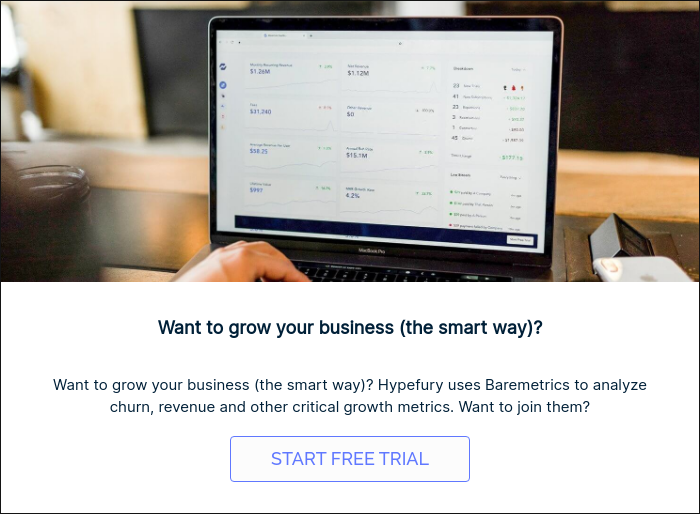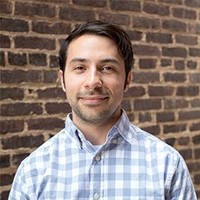Table of Contents

Requiring a call for customers to cancel their accounts was the most controversial decision we’ve ever made at Baremetrics.
After getting tons of feedback, both from our team here and directly from customers, I decided to end our “call to cancel” policy in October.
While we’ve already removed “call to cancel” from our cancellation flow, I wanted to take a minute to walk down memory lane and review why we started in the first place, what we learned, and what lessons you can implement in your company (without a lot of the pain.)
So… why require a call to cancel?
After acquiring Baremetrics, I found myself operating a business with seven years of history and 900 customers.
The (somewhat obvious) number one priority was to understand who our customers are, what they do, what they love about us, and perhaps most importantly, what they hate about us, all in the shortest time possible.
If we don’t understand our customers and their relationship with the product, how can we possibly make good decisions?
This strategy was larger than just requiring a call to cancel, we reviewed every potential opportunity for a customer interaction and found ways to introduce higher fidelity touchpoints. For example:
-
We decreased response time for chat on our marketing site. People who were previously browsing passively moved to having conversations, asking questions and getting clarification in real-time (instead of getting a response after they’ve moved on.)
-
We introduced product walkthroughs. Previously customers had to reach out to us for help getting their account set up, now we reach out and offer help, and where possible take live calls. Our customers get a better understanding of our product and how they can meet their goals, and we get to learn about the customer, how we can help, and identify gaps.
-
We actively sought opportunities to have calls to review complex support issues with our customers. Previously we’d email back and forth as long as it took, but with the shift in mindset we could both resolve issues more quickly while also learning more about our customers’ goals.
And, yes, requiring customers to talk to us when they cancel their account. While all of the other touch points were optional (although we did consider mandatory onboarding calls,) requiring a call to cancel an account was mandatory for two reasons.
-
Frankly, we didn’t think enough customers would opt in if it was optional. Understanding why customers are canceling is mission #1 when trying to understand your company and where you have to improve. It was obvious that customers would be upset (or furious, I once had someone pull up my linkedin so he could roast my professional history on the call 😅,) but we made the call that the amount of friction it created was worth it for the insights we could get.
-
Secondly, it gave us a moment to help the customer off the platform. It was really common for customers to continue to send us data after they left, or lose access to data sent to Baremetrics along the way. So, in addition to helping ourselves (which was definitely the primary goal) we got to provide a service, too.
Surprisingly to me, something like 60% of the people appreciated the offboarding and provided in-depth feedback (up to 45 mins to an hour!), 20% of the people just wanted to get through it as quickly as possible (single word answers), and the remaining 20% probably would have rather had a cage match.
How we collected churn data and took action on it
Historically, we had been relying on our own product, Cancellation Insights, to both collect and analyze this churn data.
In regards to the first point, Baremetrics users might be wondering why we wouldn’t just use our Cancellation Insights tool. Why make our success team take calls when we have a tool that collects the same information?
As a quick plug, Cancellation Insights rules. It’s one of our products that automatically presents cancellation surveys to churning customers in app, or sends the survey via email (your choice.) The cool thing is that using Cancellation Insights allows you to have churn conversations around revenue lost, and not just customers.
It’s really common that smaller customers churn for different reasons than larger customers, and it’s just as common to have recency bias when planning out your roadmap—Cancellation Insights let’s you see the actual revenue impact on your business as you’re planning to either build a feature a competitor has but your missing versus fixing a bug in one of your current features.
Because this is in your Baremetrics account everything is tied back to a customer’s profile, so you can review the entire journey: sign up, plan changes, charges, through to discounts, previous churn, and finally their cancellation reason. Cancellation Insights has been huge for getting the whole picture around churn.

Cancellation Insights’ in-app form
So after that pitch… Why didn’t we use it?
The somewhat evasive answer is that we did—we just had our team in front entering the data. Coming in fresh to the business, I didn’t even have confidence that the churn reasons in our Cancellation Insights matched our business… which is ultimately what led to making the calls synchronous.
When we started doing this, I took 100% of the calls. If the customer was willing to share their story with Baremetrics, I’d ask about what we did great, and where we dropped the ball. If they had any questions I made sure they were answered, and I took the lead on getting any data out of the platform they wanted to bring with them.
I’d take copious notes through the process, and as I had a series of cancellations I would review them to see what themes exist, adding new categories where it made sense, and then putting multiple paragraphs into the “anything you want to share?” field so we could always refer back later.
This definitely rubbed some people the wrong way, but we actually found later that Baremetrics’ founder, Josh Pigford, actually removed self-serve cancellation in 2017 (great minds think alike?) You should read this great post for yourself, but he made this decision when Baremetrics’ churn had risen from 6 percent to an unsustainable 13 percent. By removing self-serve cancellation, he and his team were able to collect actionable feedback and save around 15% of the customers who tried to cancel.
I’m sharing a bit here on the why and how to hopefully demystify the process a bit, and perhaps to dispel some notions that it’s unethical or evil. I’ll completely concede that it’s the high conflict path to take, and it’s extraordinarily annoying to (at least 40% of) your customers, but it has a time and a place, and can reveal a ton about what’s not working in your business.
If it’s so great, why’d you stop?
The formula for evaluating the continuation of call to cancel was something like (novel insights gained / customer frustration) > 1.
When we first started talking to customers, it felt like 100% new information. Customer frustration was at an extremely high 100, but, our insights were like 10,000, so while painful, it still made sense to keep going.
But, over time, novel insights gained has gone down.
Since starting, we’ve gone from not knowing why customers were canceling to having a prioritized list of issues for us to go after and having repeated conversations. Initially every conversation was novel, but eventually we realized: after the first minute we knew exactly what the customer was thinking, which problems were affecting them, and what solutions we could have implemented to save them.
The straw that broke the camel’s back was a customer survey we did a bit prior to making the decision. We sent out a survey using this tool called Voiceform, which let’s customers either type answers, or, they can speak instead. We heard otherwise happy customers remark that they didn’t agree with the practice, and that it generally created friction against our mission to help entrepreneurs succeed.
Hearing that in the voice of the customer brought us back to our formula… and we were under water. Novel insights had gone down, but customer frustration was as high as ever—to the point that it was no longer a good deal for anyone.
At this point, causing frustration wasn’t worth it anymore. So, we officially reinstated self-serve cancellation on October 29th, 2022.
What’s next
Now, if a customer wants to cancel their Baremetrics subscription, they can do so directly from their account. They’ll be prompted to share a reason for canceling via Cancellation Insights.
If you’ve made it this far in the blog post perhaps you’re dealing with churn that you’re not quite sure how to handle, and are perhaps thinking of requiring customers to talk to you in order to leave. I hope that what I’ve shared here makes you feel a bit more confident in giving that a try as an experiment.
If you’re still not quite sure what to do, reach out to me and I’ll be happy to review your business and provide some specific recommendations as someone who’s been through it!



